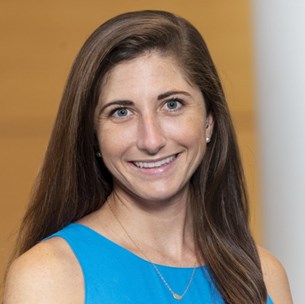Meeting
2021 ASCO Annual Meeting

Memorial Sloan Kettering Cancer Center, New York, NY
Kathryn Ries Tringale , Lara Hilal , Abraham Jing-Ching Wu , Andrea Cercek , Marsha Reyngold , Paul Bernard Romesser , Emmanouil Pappou , Jessica Flynn , Zhigang Zhang , John Navilio , Sean Berry , Rona Yaeger , Philip Paty , Martin R. Weiser , Julio Garcia-Aguilar , Leonard B. Saltz , Christopher H Crane , Carla Hajj
Background: With a rising incidence of younger patients diagnosed with rectal cancer, the long-term toxicity of cancer-related therapy is becoming even more relevant. Risk of SPM is a known potential consequence of both chemotherapy (chemo) and radiation therapy (RT), yet the rate of SPM in patients with rectal cancer is still not defined. We sought to further investigate factors associated with and outcomes of SPM after RT for rectal cancer. Methods: Patients diagnosed with stage II-III rectal cancer treated with chemo and/or RT from 1995-2019 were included in a retrospective study. Patients treated with palliative intent and those who survived < 5 years from treatment were excluded. RT-associated SPM was defined as a cancer occurring ³5 years after RT completion. Cumulative incidence (CI) of SPM was analyzed using a landmark analysis at 5 years with death as a competing risk. For patients with CT simulation scans available, dosimetric analyses evaluated doses to the organs developing SPM. Kaplan Meier analysis was used to evaluate overall survival among patients who developed an SPM. Results: A total of 2,700 patients were included (RT = 978; chemo = 1722). Demographic characteristics were equivalent apart from age, which was higher in the RT group (61 vs 59 years, p < 0.001). Five (0.3%) chemo patients developed an SPM, all within 5-10 years after treatment for rectal cancer, vs 48 (4.9%) RT patients. The 8-year CI of developing an SPM in the RT group was 4% (95% CI 2.4-6.2) and increased to 17% at 15 years (95% CI 12.1-21.8) and 21% at 20 years (95% CI 14.8-27.7). Most (89%) RT patients had received chemotherapy (most commonly 5-FU or FOLFOX). The median time to SPM was 108 months (interquartile range [IQR], 84-140). After pelvic RT, the most common SPM histology was endometrial (38%), followed by prostate (31%), bladder (23%), sarcoma (4.2%), and other gynecologic cancers (4.2%). Seven patients had CT simulations for dosimetric analyses: median of maximum dose to the organ with SPM was 5301cGy (IQR, 4928-5427), median of mean dose was 4551 cGy (IQR, 4476-4751). None of the patients who developed endometrial cancer had Lynch syndrome. Median OS for patients with SPM after RT was 5.1 years with 5-yr OS of 58% (95% CI 43-77); 44 out of 48 patients needed at least one treatment modality for their SPM, and 8 received trimodality treatment [surgery, chemo and RT]. Conclusions: The CI of SPM increased from 4% at 8 years to 17% at 15 years and 21% at 20 years following pelvic RT for rectal cancer. Endometrial cancer was the most common SPM and survival following treatment of SPM was favorable. These data serve as a foundation for future prospective studies evaluating ways to reduce SPM such as proton therapy.
Disclaimer
This material on this page is ©2024 American Society of Clinical Oncology, all rights reserved. Licensing available upon request. For more information, please contact licensing@asco.org
2021 ASCO Annual Meeting
Poster Session
Symptoms and Survivorship
Symptom Science and Palliative Care
Late and Long-Term Adverse Effects
J Clin Oncol 39, 2021 (suppl 15; abstr 12065)
10.1200/JCO.2021.39.15_suppl.12065
12065
Online Only
Abstract Disclosures
2024 ASCO Gastrointestinal Cancers Symposium
First Author: Janice Zhao
2024 ASCO Gastrointestinal Cancers Symposium
First Author: Felipe Fernando Quezada
2024 ASCO Gastrointestinal Cancers Symposium
First Author: Valentina Burgio
2023 ASCO Annual Meeting
First Author: Jianwei Zhang